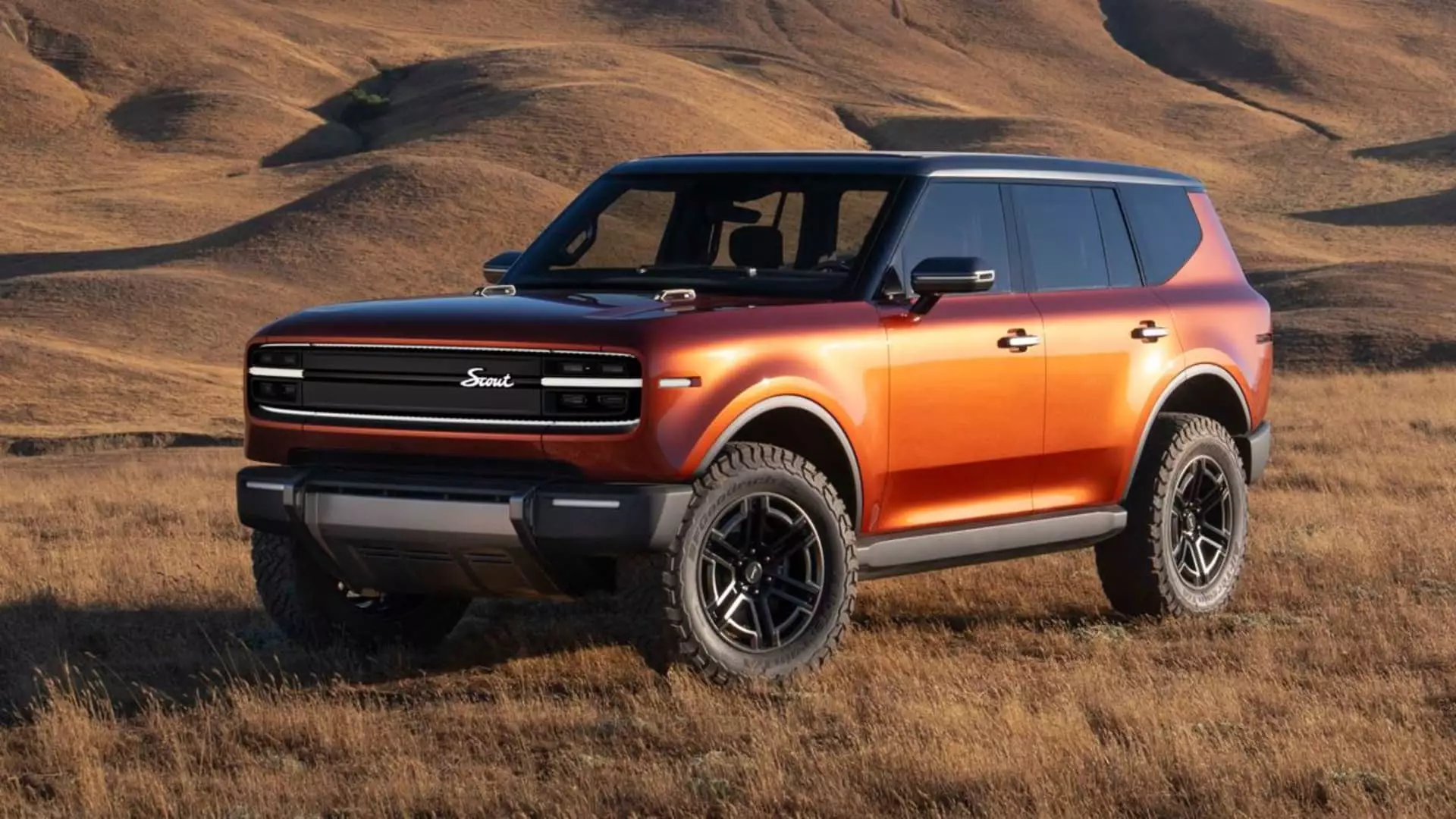The electric vehicle (EV) landscape has been marked by intense competition and rapid changes that challenge even the most seasoned automakers. Recently, under the backing of Volkswagen, Scout Motors made a noteworthy announcement regarding its entry into the evolving field of electric vehicles. Positioned as a revival of a classic American brand, Scout is embracing flexibility and innovation, crucial elements for success in the modern automotive market.
Originally a nameplate recognized from 1961 to 1980, Scout is being reintroduced as an electric vehicle brand, leveraging both heritage and new technology. The recent unveiling of their first vehicles is not just a nostalgic nod to the past; it signifies a commitment to creating modern, sustainable transportation solutions. Historically, American vehicles held a strong cultural significance, and Scout Motors aims to capitalize on this legacy while pivoting to meet contemporary consumer demands.
Scout’s initial focus on producing solely electric vehicles has shifted to incorporate extended-range electric vehicles (EREVs), a twist that illustrates the brand’s adaptability amid market uncertainties. This move is indicative of a broader trend among automakers who recognize that consumer hesitance towards fully electric options necessitates a more gradual introduction to electrification. Scott Keogh, CEO of Scout Motors, emphasized the importance of agility within a startup, noting that market conditions and consumer appetite can dictate necessary adjustments.
EREVs, as introduced by Scout, represent a hybrid approach that includes a traditional combustion engine alongside electric features, essentially functioning as a range extender when the battery’s energy depletes. This design not only enhances the vehicle’s versatility but also alleviates range anxiety—an ongoing concern among potential EV consumers. By providing this hybrid option, Scout is effectively allowing consumers to transition into electrification while still maintaining the safety net of traditional fuel sources.
Keogh pointed out that the inclusion of EREVs serves a dual purpose: it assures consumers who may be skeptical of fully electric models while also positioning the Scout brand as a modern solution in a marketplace rife with uncertainty. Their ambition to maintain a purely electric lineup has not been abandoned entirely; rather, it is being supplemented to accommodate evolving consumer preferences and economic realities.
The strategic decisions made by Scout are not just rooted in consumer sentiment but are also pivotal for fiscal responsibility. The company’s ambitious aim to achieve operational profitability within a year of launching their vehicles is noteworthy, especially considering the financial struggles faced by some current EV startups. The establishment of a $2 billion manufacturing facility in South Carolina signifies significant investment in production capabilities, with an expected output of 200,000 vehicles. This scale is essential for competing in a marketplace where large automakers like Ford and GM dominate.
Moreover, the forthcoming line of vehicles—the Traveler SUV and Terra pickup truck—targets profitable market segments that are historically lucrative. With a starting price between $50,000 and $60,000, and incentives potentially sweetening the deal, Scout’s pricing strategy is framed as a competitive advantage. The higher-end segments that Scout plans to penetrate have shown robust profit pools, indicating that the company has pinpointed where the money is in the current automotive landscape.
The electric vehicle sector is rapidly evolving, emphasizing cutting-edge technology as a distinguishing feature. Scout Motors is leveraging this trend by incorporating advanced designs that blend aesthetic appeal with functional innovation—featuring an interior configured with large screens and soft-touch materials, creating an inviting driver experience. Furthermore, their vehicles are developed to accommodate bi-directional charging, allowing them to serve as power sources, thus expanding their utility.
While competing against established brands such as Jeep and Ford—which have long-held dominance in the off-road and pickup segments—Scout’s modern take on the traditional truck and SUV designs allows it to present a unique offering in the crowded marketplace. The Traveler and Terra are set to compete not only based on fuel economy and emissions but also through performance metrics that include rapid acceleration and impressive torque figures, essential for off-roading.
As Scout Motors navigates its journey in the electric vehicle marketplace, its planned expansion of the vehicle lineup indicates a forward-thinking strategy aimed at long-term sustainability and growth. The emphasis on EREVs alongside developing purely electric vehicles showcases a balanced approach to electric vehicle adoption, catering to various consumer needs while strategically positioning the brand for future success.
With the ongoing shifts in the automotive landscape, the effectiveness of Scout Motors’ strategy remains to be seen. The path they’ve chosen reflects a keen awareness of market trends and consumer behavior while holding onto a legacy that resonates with automotive enthusiasts. As they prepare to enter the market in 2027, how effectively they can navigate this dynamic environment will ultimately determine their legacy in the modern automotive world.

